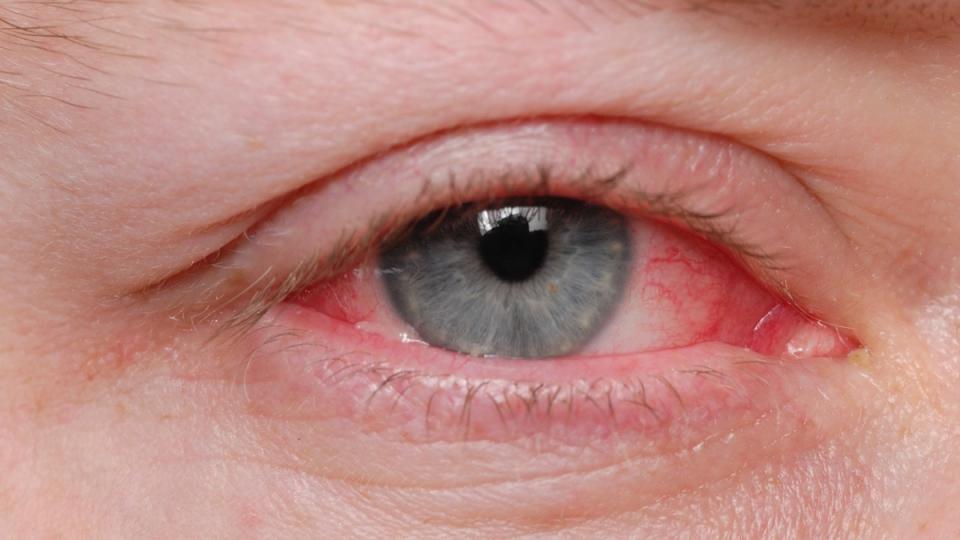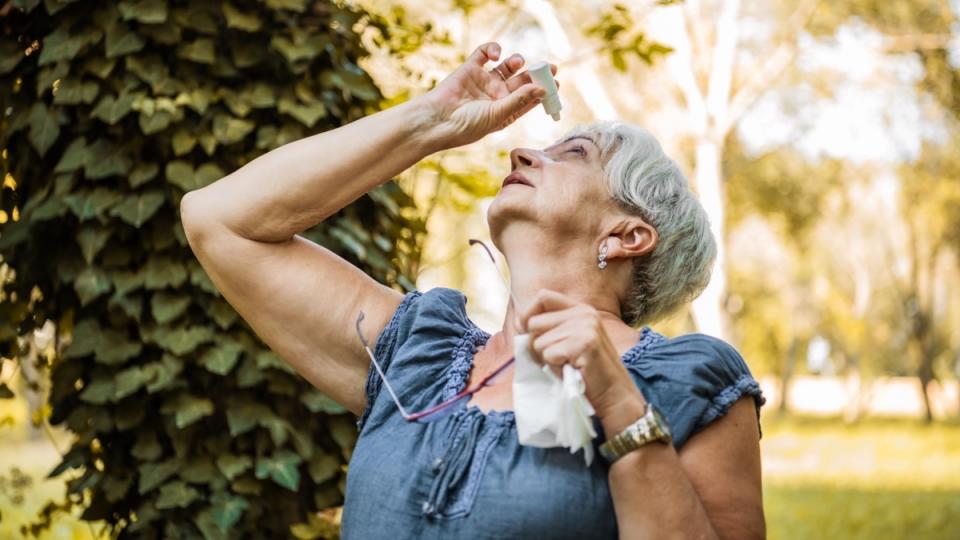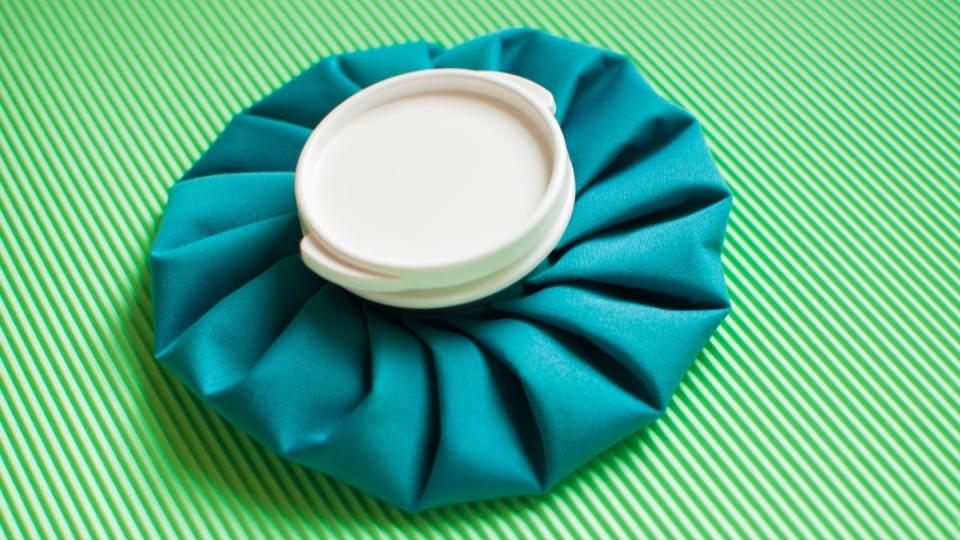Eye Doctors Say These 5 Easy Conjunctivitis Self-Care Tips Speed Healing From Pink Eye
You wake up one morning with crusty lashes. As the day goes on, your eye won’t stop itching or watering. You might chalk it up to allergies or dry eyes, but then you catch a glimpse in the mirror and see that your eye is red and swollen. With a sinking feeling, you realize you’re dealing with conjunctivitis, better known as pink eye. The good news? While pink eye can be uncomfortable, it’s usually easy to treat at home with some simple conjunctivitis self-care tips. Here’s what you need to know.
What is conjunctivitis?
Conjunctivitis is an inflammation of the conjunctiva, the thin membrane that lines the front of your eyeball and the inside of your eyelids. This membrane helps lubricate your eye when you blink, and it also protects the eye from microbes and irritants.
Viruses, bacteria and environmental irritants can cause the conjunctiva to become swollen or inflamed. Because the eyeball is home to a network of blood vessels, this irritation causes the white part of the eye to turn pink or red.
You may also experience symptoms such as:
Watery or goopy eyes
Itching or burning
A gritty sensation, as if something is in stuck your eye
Discharge from the eye or crustiness after sleeping
While conjunctivitis is unpleasant, it’s a common condition that affects millions of people each year. And it almost always resolves on its own (though conjunctivitis self-care remedies can help you feel better even faster).

Related: Is Your Blurry Vision Normal Aging or Something More? Eye Docs Reveal How to Tell the Difference
The top 2 causes of conjunctivitis
“The two major causes of conjunctivitis are allergic conjunctivitis and infectious conjunctivitis,” says Danielle Trief, MD, an associate professor of Ophthalmology at Columbia University Medical Center. In rarer cases, pink eye may be caused by a bacterial infection, dry eyes and certain autoimmune conditions, she adds.
Around 80% of cases of infectious conjunctivitis are viral, and most of those are caused by adenoviruses, the same group of viruses that can cause the common cold.
“Viral and bacterial conjunctivitis are both known for being extremely contagious,” says Michelle Holmes, OD, optometrist at Pacific Neuroscience Institute in Santa Monica, CA. “They spread easily through close contact with infected individuals or contaminated surfaces.” Your risk of contracting infectious conjunctivitis goes up if you work in a healthcare setting or a school, or if you have kids or grandkids at home.
Dry eyes — which affect more than 60% of perimenopausal and menopausal women — can raise your conjunctivitis risk, too. You may also be more likely to pick up a viral or bacterial infection if you wear contact lenses, adds Jared Braunstein, DO, a board-certified internist with Medical Offices of Manhattan and contributor to LabFinder.
Allergies are another common cause of conjunctivitis. “Allergic conjunctivitis is caused by allergens like pollen or grass,” Dr. Holmes says. “This type of conjunctivitis is usually more common during spring and fall, when the pollen count is high.” Unlike viral pink eye, however, allergic conjunctivitis is not contagious. (See the the best teas for allergies that can help ease symptoms.)
Pink eye vs allergies: How to tell the difference
Viral pink eye and allergic conjunctivitis have a lot of overlapping symptoms. In both cases, your eyes may be red, irritated and puffy. However, there are a few subtle clues that can help you determine whether you’re dealing with allergies or an infection:
1. Are your eyes itchy?
Redness and irritation are common in both types of conjunctivitis. But if you can’t stop rubbing your eyes, that’s often an indication that you’re dealing with allergies. “The hallmark difference is itchiness,” Dr. Holmes says. “Itching is a common symptom of allergic conjunctivitis, but is much less common in viral and bacterial forms.”

2. Is it in one eye or both?
“The other hallmark is whether symptoms are initially unilateral or bilateral,” Dr. Holmes says. If only one eye is affected, or it starts in one eye and spreads to the other, then a viral or bacterial infection is the most likely culprit. If both eyes swell up at once, allergies are probably to blame.
3. Are your eyes watery or goopy?
Paying attention to any discharge can help you differentiate between viral pink eye vs allergies. “Viral and bacterial conjunctivitis usually produce a discharge that is goopy and mucus-like,” Dr. Holmes says. “It may be green, yellow or white in color and often causes crusting around the eyelids and lashes. Allergic conjunctivitis, on the other hand, tends to involve a more clear, watery discharge.”
4. What’s going on around you?
Are you in the thick of allergy season? Are you getting over a recent respiratory infection? Were your grandkids rubbing their eyes during their most recent visit? Paying attention to potential triggers around you can be an easy way to guess whether you’ve got viral pink eye or allergies, Dr. Holmes says.
Related: Is Your Cold Actually Allergies? MD Reveals the #1 Symptom That’s a Dead Giveaway
Conjunctivitis self-care: How to cure pink eye at home fast
“Most of the time, conjunctivitis does go away on its own,” Dr. Trief says. Allergic conjunctivitis will typically clear up once the allergen is removed or the pollen count drops. Viral conjunctivitis, on the other hand, may take up to two weeks to fully clear. Of course, when your eyes are watering nonstop or it hurts to blink, waiting two weeks can feel like an eternity. Luckily, these simple conjunctivitis self-care tips can speed relief.
Allergic conjunctivitis self-care:
1. Use artificial tears

The best way to get rid of allergic conjunctivitis is to remove the allergen. But that’s not always possible, especially when seasonal allergies kick in to high gear. When environmental irritants are unavoidable, Dr. Trief recommends artificial tears for an extra layer of protection. One to try: Blink Tears Lubricating Eye Drops.
“Using frequent artificial tears can help wash out pollen,” Dr. Trief says. Plus they can soothe irritated eyes. “For symptomatic relief, I ask patients to put the tears in the refrigerator,” she adds. “It’s like an ice pack for the eye — it feels good.”
Related: Treating *This* Common, Sneaky Cause of Blurriness Can Improve Your Vision in 7 Days
2. Clean your fans
Taking 10 minutes to wipe down the blades of any ceiling fans, box fans or window A/C units in your house is a smart conjunctivitis self-care strategy. Why? The devices can be a sneaky trigger for allergic conjunctivitis because the blades tend to gather dust, dander and pollen and then circulate it in the air, Dr. Trief says.
3. Try itch-relief eye drops
“For allergic conjunctivitis, over-the-counter eye drops work very well,” Dr. Trief says. In particular, Lastacraft and Olopatadine can provide effective relief because they act as antihistamines and mast cell stabilizers, she says. This means they not only mitigate the misery-inducing allergy symptoms caused by histamines, but they also help to prevent your body’s mast cells from producing those histamines in the first place.
Viral conjunctivitis self-care:
1. Apply a cold compress
A viral infection has to run its course, but in the meantime, you can soothe the swelling and prevent further irritation by applying a cold compress. “Cold compresses at home can help give symptomatic relief,” Dr. Braunstein says. He recommends applying a cold washcloth to the eyes four or five times each day for a few minutes at a time.

Important: Use a clean washcloth each time. And if you only have pink eye in one eye, be sure to keep the washcloth away from your healthy eye to avoid spreading the infection.
2. Stop the spread
If infectious conjunctivitis spreads from one eye to the other, it’ll drag out your recovery time. That's why Dr. Holmes says a smart conjunctivitis self-care goals is to avoid getting “double pink eye” or sharing the infection with the rest of your household. She recommends these easy hygiene tips:
Wash your hands frequently with soap and water.
Avoid touching or rubbing your eyes as much as possible.
Don’t share towels, pillows, makeup or other items that get close to the eyes.
Regularly disinfect high-touch surfaces like tabletops and doorknobs.
Don’t wear contact lenses or eye makeup while you have conjunctivitis. These can harbor viruses, bacteria and allergens. If you used eye makeup while your eye was infected, toss it and replace it.
Conjunctivitis self-care: When to see a doctor
Conjunctivitis usually clears up on its own within two weeks. However, you still may want to schedule an appointment with your doctor. “Your eye doctor can advise you on the most likely cause of your infection and determine whether prescription eye drops may hasten recovery,” Dr. Holmes explains.
In rare cases, an infection can damage the cornea or affect your vision. “Warning signs to see a doctor are moderate to severe pain in eyes, blurry vision, daytime discharge from eyes, feeling like something is stuck in your eye and increased swelling, redness and tenderness in eyelids and around the eye,” Dr. Braunstein says.
For more ways to keep your eyes healthy and vision sharp:
Is Your Blurry Vision Normal Aging or Something More? Eye Docs Reveal How to Tell the Difference
Doctors Reveal the Snack That Cuts Your Risk of Vision-Clouding Cataracts in Half
Treating *This* Common, Sneaky Cause of Blurriness Can Improve Your Vision in 7 Days
This content is not a substitute for professional medical advice or diagnosis. Always consult your physician before pursuing any treatment plan.

